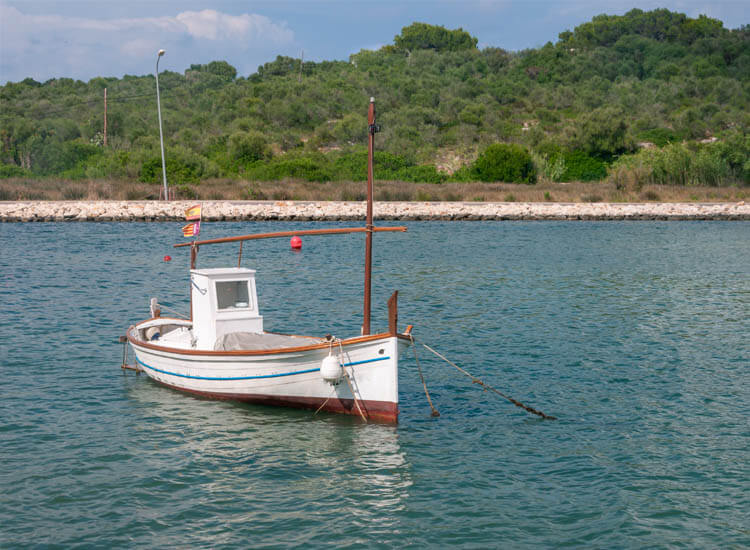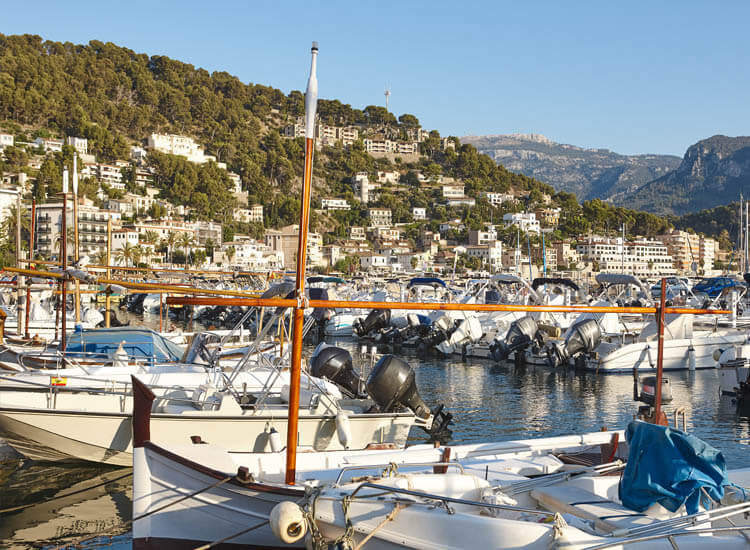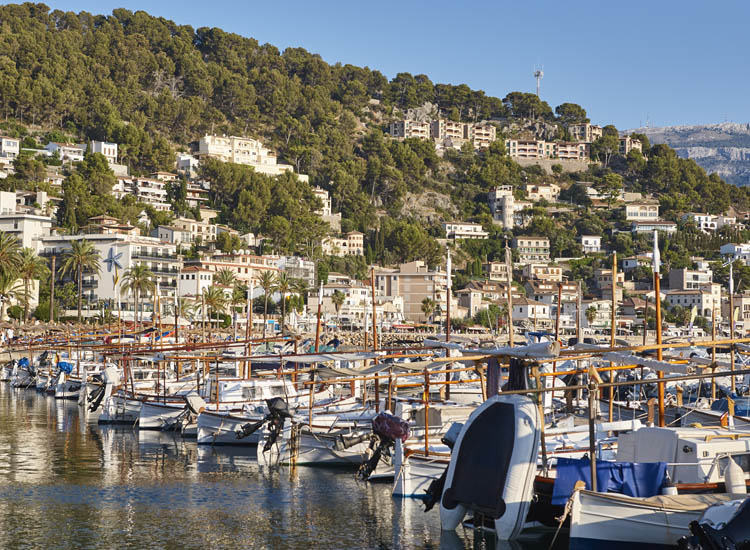Sailing the Mediterranean, almost touching the water, is what the boat we are going to talk about today allows you to do.
The llaut.
The llaut is the traditional boat of the Balearic Islands (among other areas) that has been used for centuries in the Mediterranean.
If you are interested in maritime culture or sailing, don’t miss today’s post, dedicated to the Balearic llaut.
Let’s get started!
Brief history of the llaut and its cultural importance in the Balearic Islands
The llaut is the cultural heritage of the Balearic Islands and, by extension, of the whole Mediterranean.
Some people talk about the danger of extinction of this agile boat nowadays, but in the past it was a great tool used by fishermen and sailors to transport goods.
Carved out of wood by the artisan hands of the ancient mestres d’aixa, the llaut is the traditional fishing boat of the Balearic Islands.
Distinctive features of the llaut
The main characteristics of this vessel are presented below:
- Wooden hull
- Rounded bow and stern
- Flat deck
- Lateen sail
- Three masts
- Deep draught
- From 3-4 to 12 meters in length
Its beauty and elegance make it a popular tourist attraction, and its historical and economic importance makes it a symbol of the islands and their people.
The traditional llaut is a small, lateen-sailed boat of variable length, which supports three masts and can reach good speed while remaining steady and stable as it sails.
The llaut’s hull is designed for sailing. In its initial design and construction, wood from local trees such as pine, almond, carob and olive trees was used. Its rounded deck allows water to drain out of the sides when it comes overboard.
Professionals also appreciate the rudder that allows the skipper to steer the boat with the tiller between his legs and thus have his hands free to set nets and fish, which makes them very manoeuvrable.
The boat has been evolving, and the ones that are made now retain some of their initial characteristics, although they are now far removed from the traditional llauts, especially in the materials used (fibreglass instead of wood), the price of which is considerably lower, and with very high quality finishes, like any luxury yacht.
The number of llauts in Majorca and the rest of the Balearic Islands has been decreasing alarmingly because they have been replaced by other boats that do not need so much maintenance.
Design and construction of the llaut
As we have already mentioned, the first llaut builders were known as “mestres d’aixa” and they used local wood to make them.
Their low gunwales facilitated sailing and rowing, and allowed easy access to the water.
Its teardrop shape, its cossia (central opening) and its lateen sail, which can be used as a propulsion method or as a canopy, make it unique. It was used both by rowing and sailing, although nowadays we find motor-driven llauts.
Nowadays, the number of mestres has decreased considerably and their dedication is mainly focused on restoring old examples. In Menorca there is a small association of sailors, the Friends of the Sea Association, which has recovered and restored more than a hundred boats since the 1980s. Its fifty or so members are in charge of preserving this cultural heritage.
Among its objectives is the creation of a museum of the sea, with special attention to traditional boats, and a carpenters’ school for the preservation of the craft, thus preventing it from falling into oblivion.
Over time, the design of the llaut has evolved, so much so that the differences that once existed between Mallorcan and Menorcan llauts have become blurred, but some 20 years ago, when they were more classic, the Mallorcan llaut was usually a little lower in the gunwale and the Menorcan a little higher. Possibly this was due to the fact that in Menorca the Tramuntana blows stronger and llauts with a slightly higher gunwale were needed to better ride the waves.
Traditional and modern uses of the llaut
A symbol of the Mediterranean landscapes in Spain, it was key to the life and activity of another time. Its origins go back to the Phoenicians but it passed through the hands of the Greeks and Romans before reaching the Middle and Modern Ages.
It owes its name to the stringed and wooden instrument that its creators thought it resembled.
Their use has been very varied throughout history, as they have been adapted to the needs of society at any given time: fishing, trade, transport of goods, diplomatic tasks (transporting consuls and high-ranking personalities), pleasure boats or even for combat, as there was no other better vessel.
They were also used as auxiliary boats for larger ships and were also used for smuggling or as mail or line boats between Ibiza and Formentera (as ferries are now).
These types of boats were once plentiful in all the island’s ports, as they were used by the old fishermen to carry out their work.
Current uses of the llaut
Today, they are considered a work of craftsmanship and form part of our cultural heritage. The llaut was and still is a jewel for all those who want to sail or row around the Mediterranean, reaching even the smallest coves, thanks to its size and versatility.
Its consistency and stability in the water make it a perfect boat for all kinds of activities, such as recreational sailing or sport fishing.
It is also a boat that is very resistant to the most adverse weather conditions and ideal to enjoy with the whole family.
With a llaut boat you can anchor and moor in the best moorings in the Balearic Islands, even if they are shallow.
Preservation of llauts
The llaut is a symbol of the culture and tradition of the Balearic Islands, and its declaration as an Asset of Cultural Interest was an important step towards its preservation and conservation, which otherwise seemed complicated.
The llaut has a special place in the Museu Marítim de Mallorca, as it could not be otherwise. If you are interested in visiting it, it is a recommended visit (also for children).
At the time of writing, it is temporarily closed. You can get more information from the website: Museu Marítim de Mallorca.
In conclusion, the llaut is a Mediterranean symbol that is being preserved because of its cultural significance for the Balearic Islands.
If you rent a boat with us in Mallorca, you are sure to see this unique little boat and we hope that you will recognise and appreciate it as much as we do.


